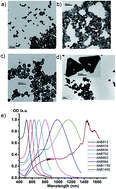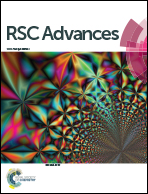Nonlinear optical properties of Au/Ag alloyed nanoboxes and their applications in both in vitro and in vivo bioimaging under long-wavelength femtosecond laser excitation†
Abstract
We synthesize Au/Ag alloyed nanoboxes (ANBs) with different LSPR (localized surface plasmon resonance) peak wavelengths and observe their various nonlinear optical properties. Both in vitro and in vivo bioimaging results show that Au/Ag ANBs are very good candidates for high-contrast and deep-tissue nonlinear optical imaging with negligible photothermal toxicity.


 Please wait while we load your content...
Please wait while we load your content...